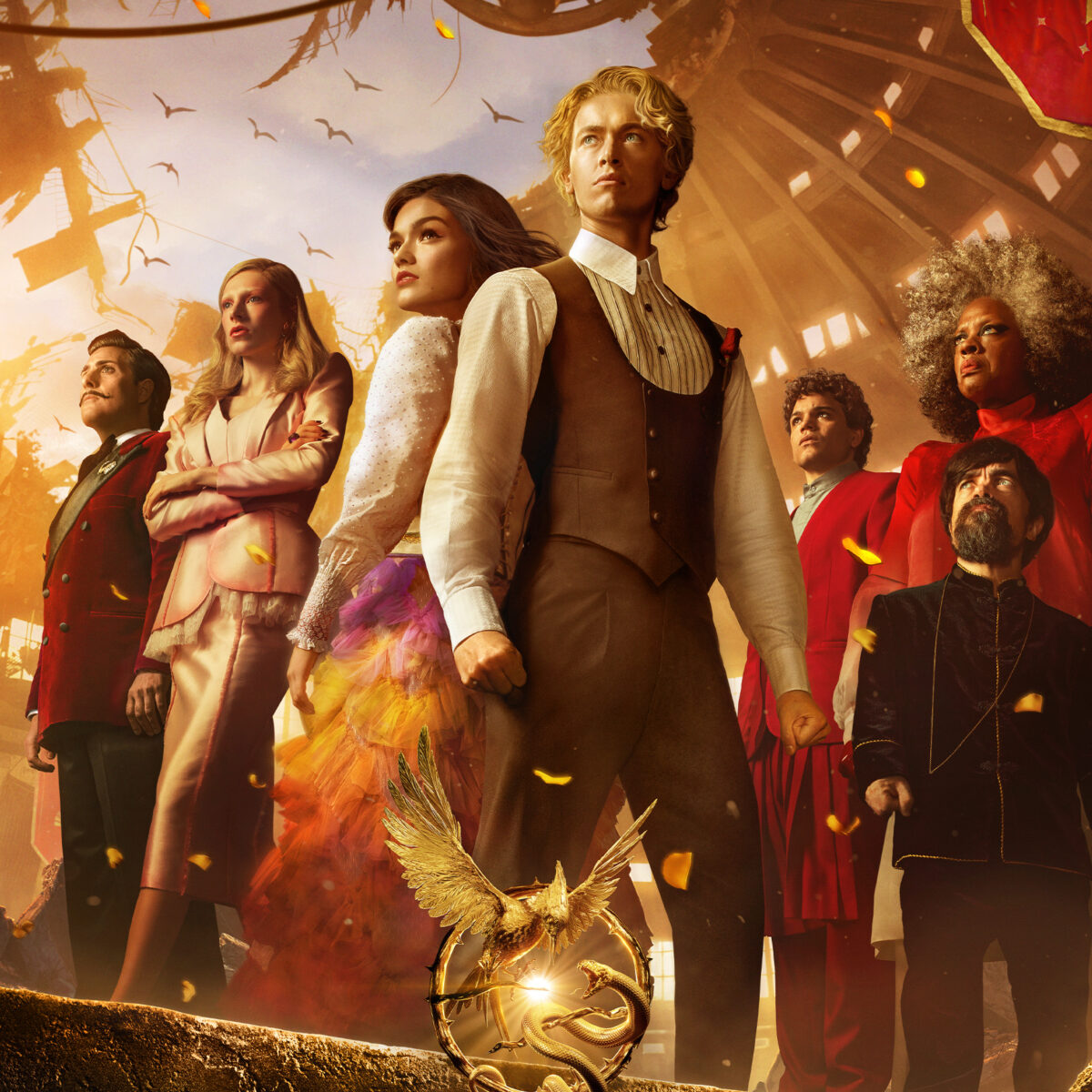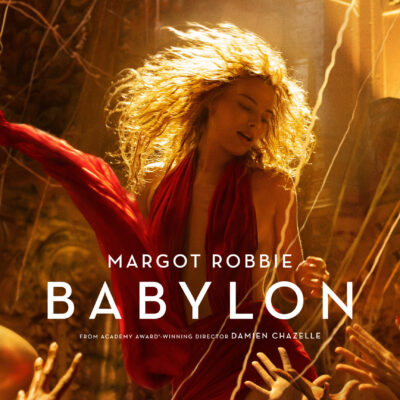Fueled with the terror of becoming prey, see how quickly we become predator?
The Hunger Games: The Ballad of Songbirds & Snakes expands upon the franchise we know and love more than ever before, taking the best parts of Suzanne Collins’ incredible world-building and putting it on the big screen. The Capitol feels as stylized and glamorous as one would hope, with its exquisite costuming and ‘50s retro-futuristic set designs.
From beginning to end, audiences are taken on a journey of corruption and moral decline. Unlike the story of Katniss Everdeen, the main character of Coriolanus Snow feels complex and dynamic in an intentionally colder and more off putting way. From the jump, there always seems to be ulterior motives throughout all his good deeds.
The juxtaposition of the franchise’s lead going from the ultimate hero to the ultimate villain is quite an enjoyable one, particularly as Snow’s origin story plays out as a prequel. The audience already knows the sinister man that he becomes, but having that knowledge actually emboldens the story with more mystery and intrigue as to how he became so morally corrupt in the first place. Tom Blyth’s portrayal of Snow does a wildly impressive job at being able to balance a seemingly typical “protagonist” with a much more manipulative, venomous person brewing underneath. It’s a unique perspective to follow and one that really heightens the way the audience is meant to depict the inner workings of Panem.
Rachel Zegler’s performance as Lucy Gray Baird is quite exceptional, and the southern accent Zegler has chosen adds a fun cherry on top of the already-fascinating characterization of the District 12 tribute. Suzanne Collins once again proves how magnificent she is at being able to create relatable and multidimensional female leads, and Zegler contributes to this with her charismatic energy and lively on-screen presence.

In the words of Zegler herself, “Lucy Gray is a performer forced to fight and Katniss is a fighter forced to perform.” This difference is key to understanding why Lucy Gray becomes such a refreshing character throughout the film, as her strategy to survive both the Games and what comes after is remarkably different from the way Katniss went about things. At the same time, the audience follows Lucy Gray through the eyes of Coriolanus Snow, and one is able to unveil a deep understanding of why Katniss causes a trigger in him so many years later.
When it comes to depicting the character of Lucy Gray, Olivia Rodrigo deserves a special shoutout as well. Her official song for the film, “Can’t Catch Me Now,” is the perfect embodiment of Lucy Gray Baird – it’s as if the character wrote the song herself. The Hunger Games soundtracks never seem to fail, and it’s largely thanks to the immensely talented artists the franchise recruits. From Taylor Swift to Lorde to Olivia Rodrigo, no franchise can compete with this one’s musical track record.
While almost everyone in the film is spectacular, Viola Davis steals the show with a deliciously devious and menacing presence throughout the movie. This powerful energy is aided by her fabulous costume designs and well-crafted dialogue, with many lines directly taken from the novel itself. Davis plays up the campy and villainous characterization so well, and her evil cackle is to die for. Her scenes with Snow include some of the best lines from the whole film, with Dr. Gaul becoming a driving force toward Snow’s loss of morality. MTV’s ‘Best Villain’ award just found its top nominee.
Josh Andrés Rivera’s Sejanus Plinth is also a major highlight, and he definitely feels like the overall heart of the film. His character represents the “natural goodness built into human beings,” as Lucy Gray puts it, where he stays on the right side of the line instead of stepping across into evil. As the only outspoken citizen of the Capitol to be heavily against the Games and the concept of segregating the districts, Sejanus is a needed and valuable character in a film with such an ultimately villainous lead.
Finally, Hunter Schafer is always a delight to see on screen, and her depiction of Tigris Snow is an absolute treat. Schafer does a great job at being the polar opposite to Coriolanus. Both characters come from a traumatic childhood, but one leads with kindness while the other becomes the enemy. For the small amount of screen time Tigris is given, Schafer makes the most of it with a heartfelt, gentle, and warm performance.

The Ballad of Songbirds & Snakes continuously jolts its audience into twists and turns, but in a way that keeps the film well-paced and electrifying throughout the first two-thirds. The story feels particularly captivating once the 10th Hunger Games begins, as some of the scenes in the arena were truly frightening and breathtakingly intense.
The film reflects a dark and gritty tone similar to its Mockingjay predecessors, with a few moments that will have audiences genuinely scared and anxiety-induced. This includes some really fun jumpscares as well! It’s very thrilling and at times horror-adjacent, especially for a PG-13 rating. The kill scenes are reminiscent of the original Hunger Games film with how gruesome and somber they feel, creating a sense of dread in the audience once it’s acknowledged that only one tribute will make it out alive. The cinematography is fantastic in the arena, making one feel like they’re in it themselves and trying to survive as Lucy Gray.
When it comes to having slight issues with the film, The Ballad of Songbirds & Snakes does feel a bit too long and definitely has a slower pace in the last third. It’s hard to say what deserves to be cut from the movie in order to make it shorter, but the last third of the film feels like it could be an entirely separate entity on its own. There were discussions to split the film adaptation into two separate movies, and that seems somewhat understandable once one sees how much content is packed into the 2h 38m runtime.

As for other minimal issues, the first 20 minutes of the film feel a little peculiar with some of the dialogue and acting choices. Particularly with some of the dialogue from the Capitol’s mentors, there was a stiffness toward the beginning of the movie that slowly recorrected itself by the time one was entrenched in the story.
The Hunger Games has always held the hearts of many, and its themes and messaging play a large role in that. This film is no different to the way the original movie series also touched on heavy topics through a dystopian lens – although, many will feel that the film unfortunately doesn’t even feel too “dystopian” these days. Its commentary on classism, war, and political propaganda also remains incredibly powerful, with an unfortunate eeriness to how authoritative figures are currently enacting harm in the real world.
Growing up as a superfan of The Hunger Games, one will feel like they’re reliving their preteen years all over again after watching this new installment. Out of all the nostalgia plays going on these days, this Hunger Games resurgence feels incredibly earned and warranted, and one will continue to feel that way after seeing the movie.
Panem today. Panem tomorrow. Panem forever. 🕊️🐍

★ ★ ★ ★
The Hunger Games: The Ballad of Songbirds & Snakes will be in theaters everywhere November 17.






